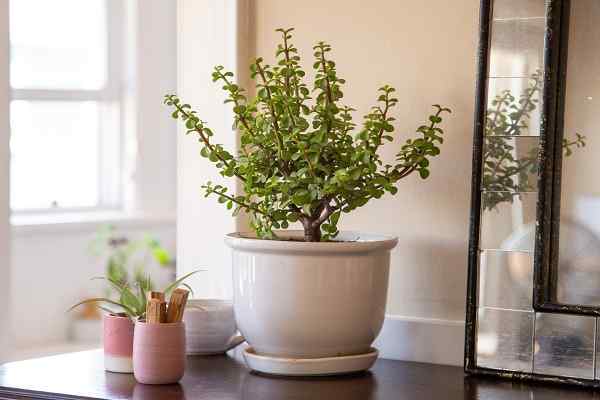
Why is My Jade Plant Dropping Leaves?
Jade plants, known for their hardiness, can still encounter issues that cause leaf drop, often due to factors such as improper watering, insufficient light, temperature extremes, or pests. Ensuring a balanced care regimen is crucial to maintaining their health and vitality. By understanding and addressing the underlying causes, you can prevent leaf drop and promote robust growth.
Answers
Improper Watering
One of the most common reasons for jade plant leaf drop is improper watering. Both overwatering and underwatering can stress the plant, leading to leaf drop. Jade plants prefer their soil to dry out between waterings. Overwatering can cause root rot, while underwatering can dehydrate the plant, both resulting in leaf loss. It’s important to water your jade plant only when the top inch of soil feels dry to the touch. Additionally, ensure the pot has good drainage to prevent water from sitting at the bottom, which can further lead to root issues.
Insufficient Light
Jade plants require bright, indirect sunlight to thrive. Insufficient light can cause the leaves to drop as the plant struggles to photosynthesize effectively. If your jade plant is not receiving enough light, consider moving it to a brighter location, ideally near a south-facing window. However, avoid direct intense sunlight, as this can scorch the leaves. A gradual increase in light exposure can help the plant adjust and recover without additional stress.
Temperature Extremes
Jade plants are sensitive to temperature changes and prefer a stable environment. Exposure to extreme temperatures, either too hot or too cold, can cause leaf drop. They thrive in temperatures between 65-75°F (18-24°C). Sudden drafts, such as from open windows or heating vents, can also stress the plant. Maintaining a consistent temperature and avoiding placing the plant near drafty areas will help keep it healthy and prevent leaf drop.
Pests
Pests such as mealybugs, spider mites, and aphids can infest jade plants and cause leaves to drop. These pests feed on the plant’s sap, weakening it and causing leaf damage. Regularly inspect your jade plant for signs of pests, including small white cottony masses (mealybugs), tiny webs (spider mites), or clusters of small insects (aphids). Treat infestations promptly with insecticidal soap or neem oil to prevent further damage and leaf loss.
Poor Soil Conditions
Jade plants require well-draining soil to thrive. Using heavy, compact soil that retains too much moisture can lead to root rot and subsequent leaf drop. A cactus or succulent mix is ideal for jade plants, as it provides the right balance of drainage and aeration. Repotting your jade plant into appropriate soil can help prevent issues related to poor soil conditions and support healthy root development.
Vote
Who is your all-time favorite president?
Overfertilization
Overfertilizing your jade plant can lead to nutrient imbalances and salt buildup in the soil, causing leaf drop. Jade plants have low fertilizer requirements and should be fed sparingly, typically once every 3-4 months during the growing season (spring and summer) with a balanced, diluted fertilizer. Avoid fertilizing during the dormant winter months. If you suspect overfertilization, flushing the soil with water can help remove excess salts.
Aging Leaves
It’s natural for jade plants to shed older leaves as part of their growth cycle. If your plant is otherwise healthy and only a few older leaves are dropping, this may simply be a normal part of the plant’s life cycle. Regularly remove any yellowing or dead leaves to maintain the plant’s appearance and health. Monitoring overall plant health and new growth can help differentiate between natural leaf drop and issues that require attention.
Root Health
Healthy roots are essential for the overall well-being of your jade plant. If the roots are damaged or diseased, the plant will struggle to absorb water and nutrients, leading to leaf drop. Gently remove the plant from its pot and inspect the roots for signs of rot, such as dark, mushy roots. Trim away any affected roots and repot the plant in fresh, well-draining soil. Ensuring good root health supports the plant’s ability to sustain healthy foliage.
Summary
Understanding the reasons behind your jade plant’s leaf drop is key to addressing the issue and restoring the plant’s health. Proper watering, adequate light, stable temperatures, pest control, suitable soil, and careful fertilization are all essential factors in maintaining a healthy jade plant. By monitoring these conditions and making necessary adjustments, you can prevent leaf drop and enjoy a thriving, vibrant jade plant. Regular care and attention will ensure that your jade plant continues to be a resilient and attractive addition to your indoor garden.